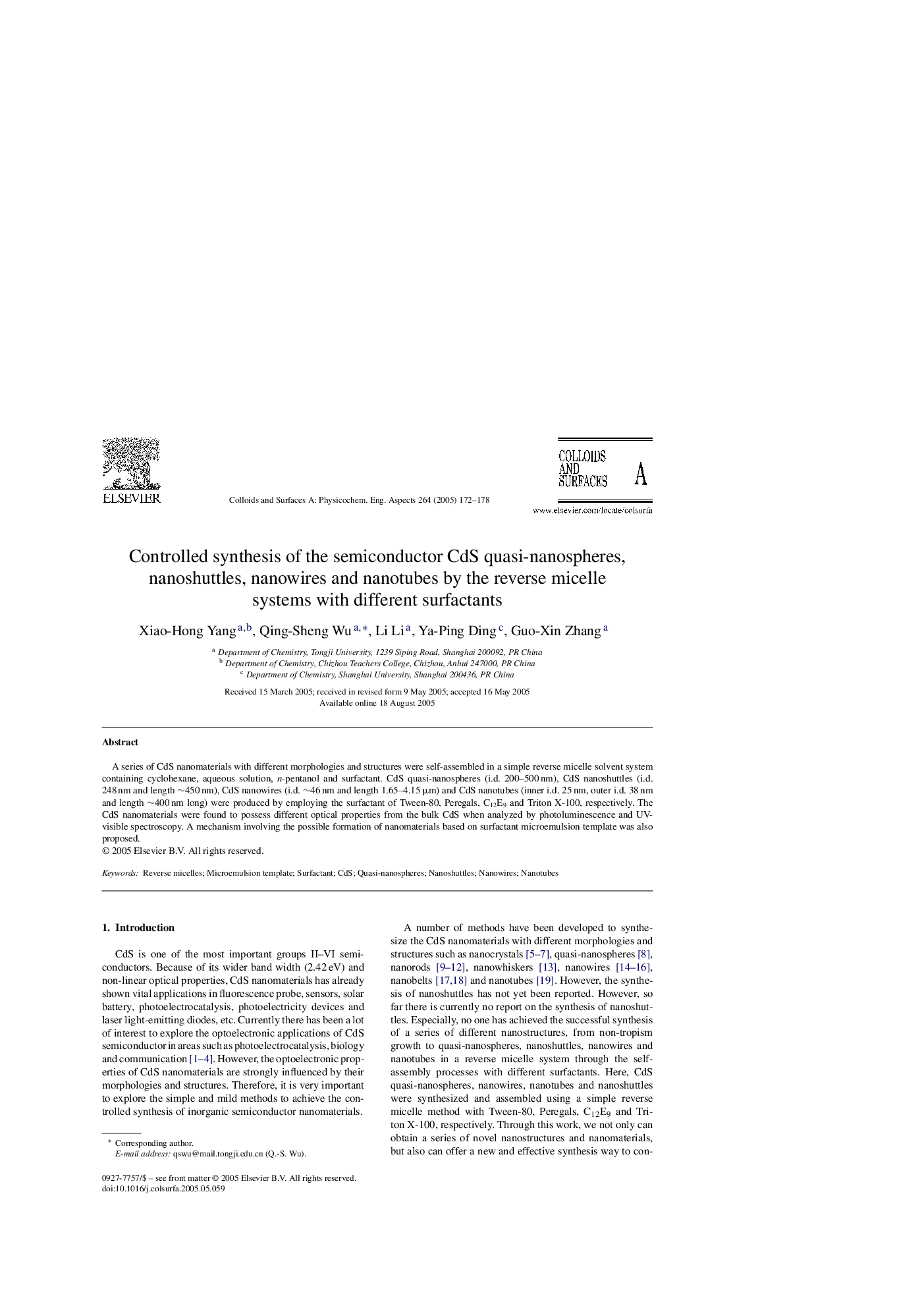| Article ID | Journal | Published Year | Pages | File Type |
|---|---|---|---|---|
| 9675725 | Colloids and Surfaces A: Physicochemical and Engineering Aspects | 2005 | 7 Pages |
Abstract
A series of CdS nanomaterials with different morphologies and structures were self-assembled in a simple reverse micelle solvent system containing cyclohexane, aqueous solution, n-pentanol and surfactant. CdS quasi-nanospheres (i.d. 200-500 nm), CdS nanoshuttles (i.d. 248 nm and length â¼450 nm), CdS nanowires (i.d. â¼46 nm and length 1.65-4.15 μm) and CdS nanotubes (inner i.d. 25 nm, outer i.d. 38 nm and length â¼400 nm long) were produced by employing the surfactant of Tween-80, Peregals, C12E9 and Triton X-100, respectively. The CdS nanomaterials were found to possess different optical properties from the bulk CdS when analyzed by photoluminescence and UV-visible spectroscopy. A mechanism involving the possible formation of nanomaterials based on surfactant microemulsion template was also proposed.
Related Topics
Physical Sciences and Engineering
Chemical Engineering
Colloid and Surface Chemistry
Authors
Xiao-Hong Yang, Qing-Sheng Wu, Li Li, Ya-Ping Ding, Guo-Xin Zhang,
